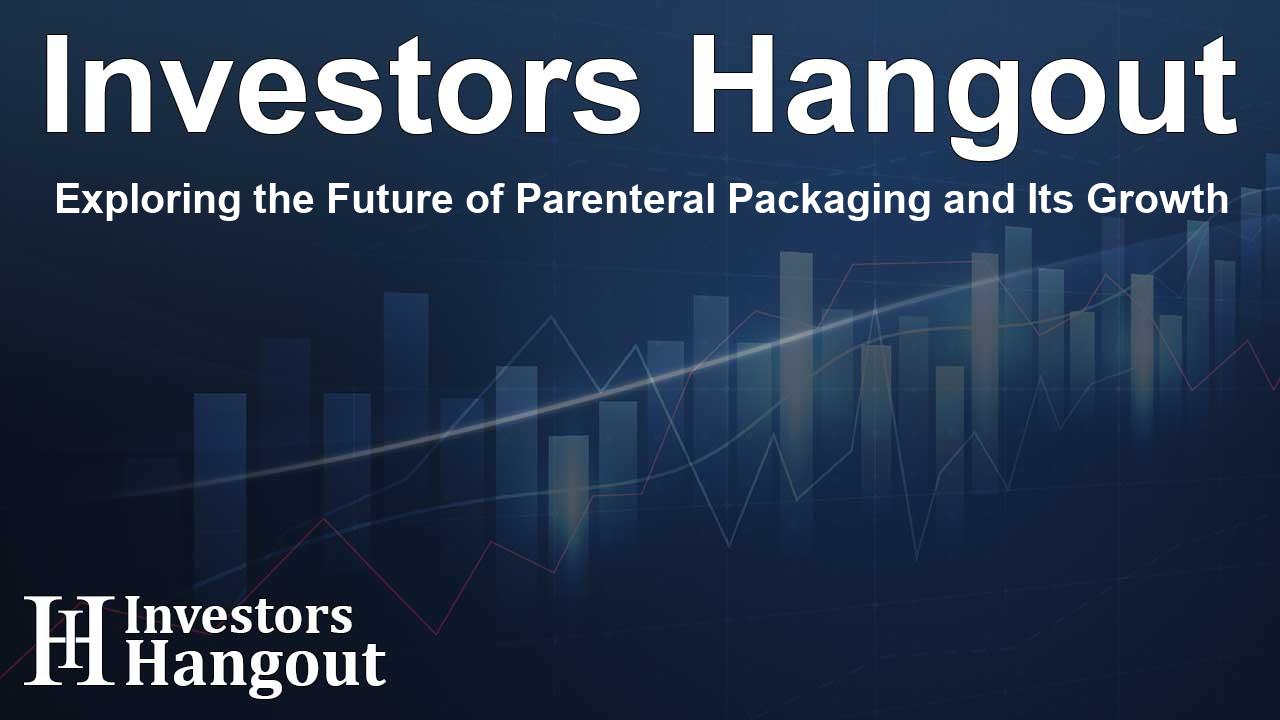Exploring the Future of Parenteral Packaging and Its Growth

Understanding the Parenteral Packaging Market
The parenteral packaging market is a rapidly evolving sector within the broader pharmaceutical industry. With a projected value of USD 20.12 billion by a specified year, this market is on a significant growth trajectory from its current valuation of approximately USD 13.39 billion. This expansion is largely driven by the rising demand for prefilled syringes and self-administration devices, which are favored for their convenience and reduction in contamination risks.
The Impact of Technological Innovations
One of the most significant contributors to the growth of the parenteral packaging market is the swift advancement of technology. Innovative packaging solutions, including smart packaging that employs artificial intelligence for quality control and real-time monitoring, are becoming more prevalent. Manufacturers are utilizing these advanced technologies to enhance packaging efficiency, safety, and reliability, which are crucial parameters in the healthcare sector.
What Makes Parenteral Packaging Important?
Parenteral packaging plays an essential role in preserving the sterility, safety, and stability of injectable medications. It acts as a barrier against microbial contamination and ensures that medications remain effective until they reach patients. With rising incidences of chronic diseases treated by injectable medications, the need for efficient packaging solutions is more critical than ever. This market's growth is notably influenced by regulatory demands for high standards in drug safety and packaging integrity.
Recent Trends in the Parenteral Packaging Market
Recent trends in the market indicate a surge in the demand for prefilled syringes and intricate self-administration devices. This shift can be attributed to an increase in home treatment options for patients, allowing them to manage their conditions with ease and accuracy. The availability of prefilled syringes eliminates the need for manual preparation, significantly lowering the risk of contamination.
Challenges and Opportunities
While the parenteral packaging market is growing, it is not without challenges. Regulatory compliance can be complex and costly, posing a barrier to market entry for smaller pharmaceutical companies. Additionally, there is a pressing demand for sustainable packaging materials, which adds to the complexity of product development. However, these challenges offer an opportunity for innovation, prompting manufacturers to enhance their designs and processes.
Regulatory Compliance and Quality Standards
With increasing scrutiny from global regulatory agencies, manufacturers must focus on maintaining high standards of quality and preventing lapses in safety. This necessity is driving the adoption of advanced packaging technologies that not only comply with regulations but also deliver superior protection against contamination.
Market Dynamics by Region
North America currently leads the parenteral packaging market, bolstered by a robust healthcare infrastructure and a growing prevalence of chronic illnesses requiring injectable treatments. The U.S. is particularly focused on expanding the market for sterile packaging solutions, responding to the rising demand for temperature-sensitive biologics.
Growth Potential in Asia-Pacific
Asia-Pacific is emerging as a significant player in the parenteral packaging market. Rapid growth in healthcare spending, coupled with increasing incidences of chronic diseases, is set to enhance demand in this region. Countries like China and India are witnessing intensified investment in healthcare infrastructure, further stimulating the need for innovative injectable drug delivery systems.
Outlook for the Future of Parenteral Packaging
As we look towards the future, the parenteral packaging market is expected to continue its upward trajectory, powered by ongoing technological advancements, increased healthcare demands, and regulatory support for innovative solutions. The shift to more sustainable materials and eco-friendly packaging formats is also likely to gain momentum. This market is not only poised for growth but is becoming increasingly vital in meeting the needs of patients and healthcare providers alike.
Frequently Asked Questions
What is the projected growth of the parenteral packaging market?
The parenteral packaging market is expected to reach USD 20.12 billion in the coming years, indicating significant growth from its current valuation.
What are the key drivers behind this market growth?
The main drivers include the rising demand for prefilled syringes, technological advancements, and the increasing prevalence of chronic diseases that require injectable medications.
What challenges does the market face?
Challenges include complex regulatory compliance, the need for sustainable materials, and high production costs, especially for smaller firms.
How does technology influence parenteral packaging?
Technology influences parenteral packaging by enhancing quality control and enabling real-time monitoring, thereby improving safety and efficiency in drug delivery.
Which regions are leading in parenteral packaging?
Currently, North America leads the parenteral packaging market, with significant growth also seen in the Asia-Pacific region due to healthcare expansions.
About The Author
Contact Lucas Young privately here. Or send an email with ATTN: Lucas Young as the subject to contact@investorshangout.com.
About Investors Hangout
Investors Hangout is a leading online stock forum for financial discussion and learning, offering a wide range of free tools and resources. It draws in traders of all levels, who exchange market knowledge, investigate trading tactics, and keep an eye on industry developments in real time. Featuring financial articles, stock message boards, quotes, charts, company profiles, and live news updates. Through cooperative learning and a wealth of informational resources, it helps users from novices creating their first portfolios to experts honing their techniques. Join Investors Hangout today: https://investorshangout.com/
The content of this article is based on factual, publicly available information and does not represent legal, financial, or investment advice. Investors Hangout does not offer financial advice, and the author is not a licensed financial advisor. Consult a qualified advisor before making any financial or investment decisions based on this article. This article should not be considered advice to purchase, sell, or hold any securities or other investments. If any of the material provided here is inaccurate, please contact us for corrections.
